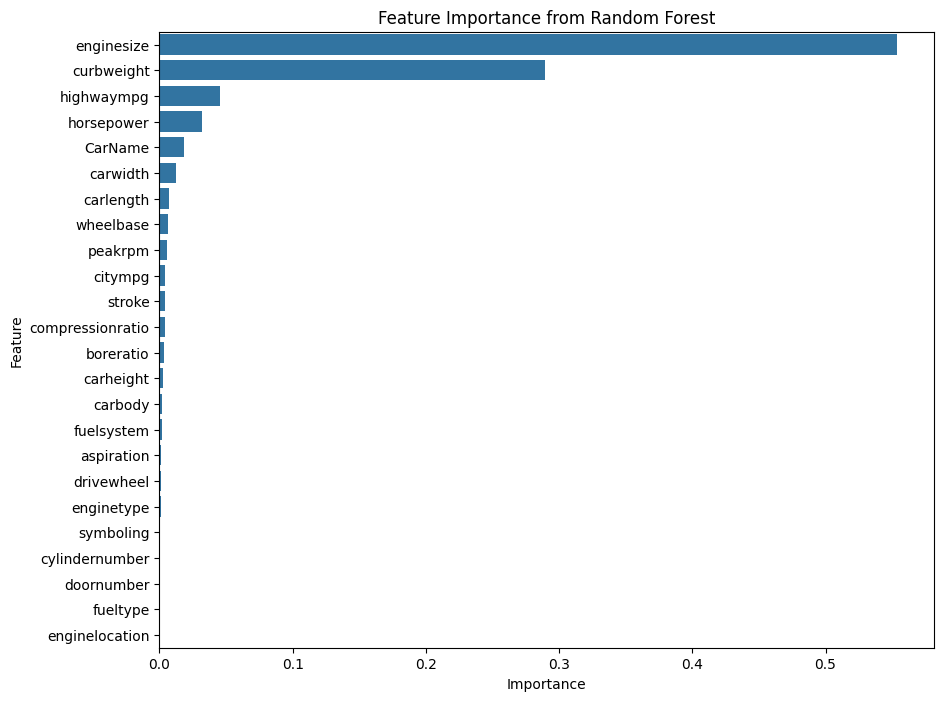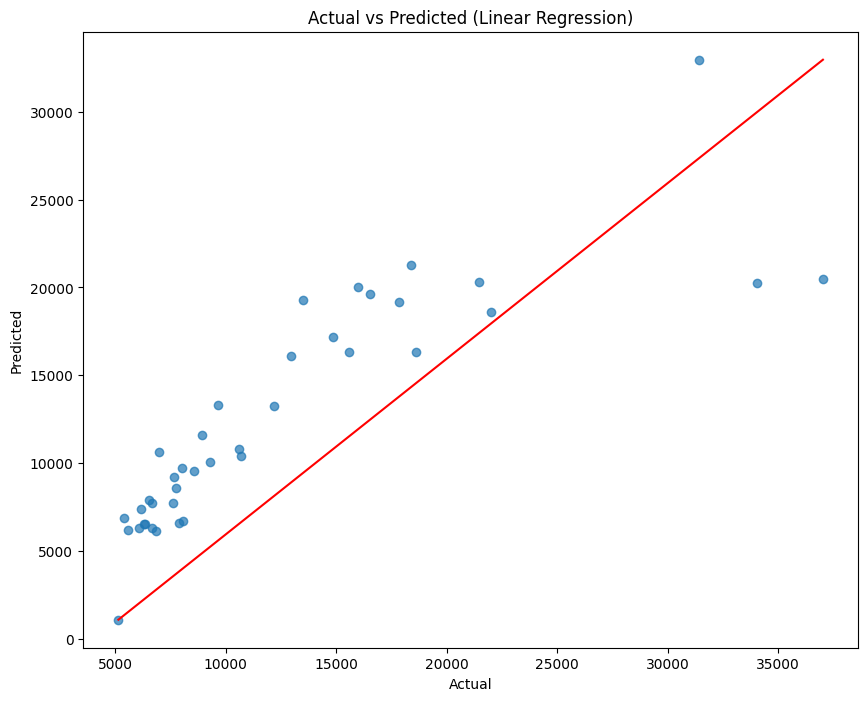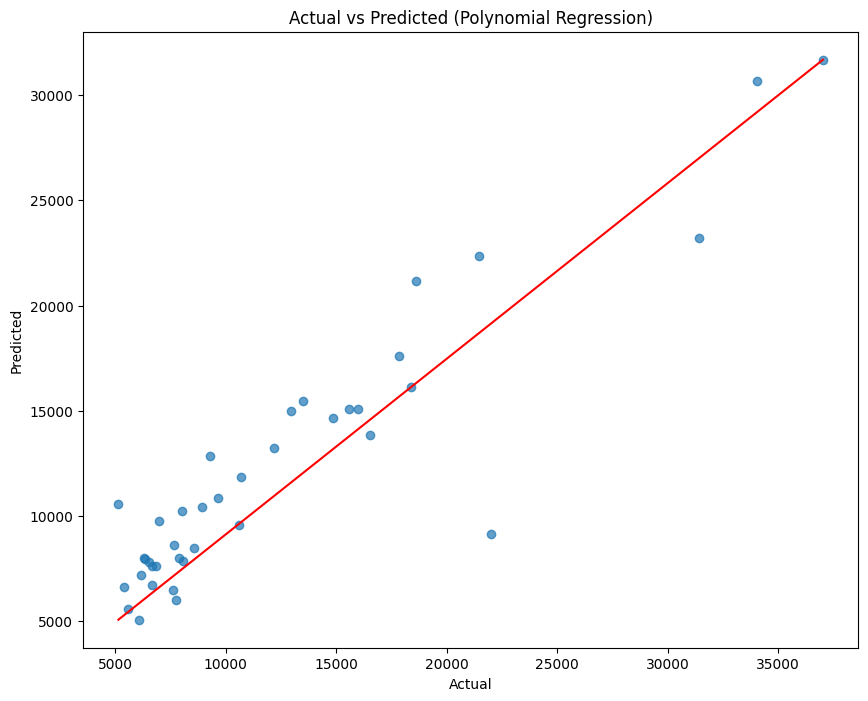Machine Learning Project

In this project, we explore the process of analyzing and predicting car prices using machine learning techniques. The project covers data cleaning, feature selection, and the implementation of regression models, with the goal of accurately predicting car prices.
The dataset is first cleaned by removing irrelevant columns, checking for duplicates, and preparing it for further analysis. This step ensures that the data is in the best possible shape for model training.
import pandas as pd
data = pd.read_csv('CarPrice_Assignment.csv')
data.drop(['car_ID'], axis=1, inplace=True)
data.info()
Using correlation analysis and a Random Forest model, we identify the most influential features that affect car prices. This step helps in reducing the dimensionality of the dataset and focuses on the most relevant variables.
from sklearn.ensemble import RandomForestRegressor
from sklearn.preprocessing import LabelEncoder
from sklearn.model_selection import train_test_split
# Preprocessing categorical features
data_encoded = data.copy()
for col in data.select_dtypes(include=['object']).columns:
data_encoded[col] = LabelEncoder().fit_transform(data_encoded[col])
X = data_encoded.drop('price', axis=1)
y = data_encoded['price']
X_train, X_test, y_train, y_test = train_test_split(X, y, test_size=0.2, random_state=42)
rf = RandomForestRegressor(n_estimators=100, random_state=42)
rf.fit(X_train, y_train)
importances = rf.feature_importances_
features = X.columns

We implement both linear and polynomial regression models to capture the relationship between the selected features and car prices. The models are evaluated based on Mean Squared Error (MSE) and R-squared values.
from sklearn.linear_model import LinearRegression
from sklearn.metrics import mean_squared_error, r2_score
model = LinearRegression()
model.fit(X_train, y_train)
y_pred = model.predict(X_test)
mse = mean_squared_error(y_test, y_pred)
r2 = r2_score(y_test, y_pred)
The results from the regression models are visualized to compare predicted vs actual car prices, providing insights into the model’s performance.


This project demonstrates the application of feature selection and regression techniques in predicting car prices. The methods used ensure that the model is both accurate and interpretable, making it a valuable tool for real-world applications.
For the complete code and further details, you can check out the GitHub repository.
Interested in collaborating or have any questions? Reach out to me through this form.